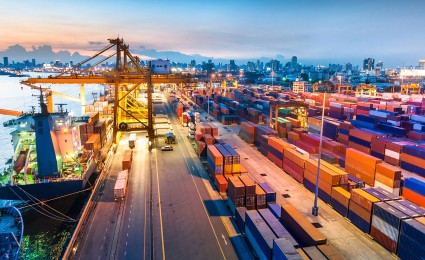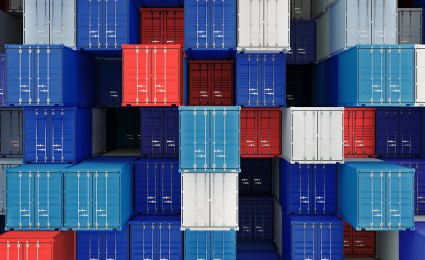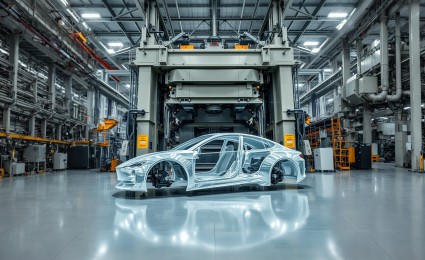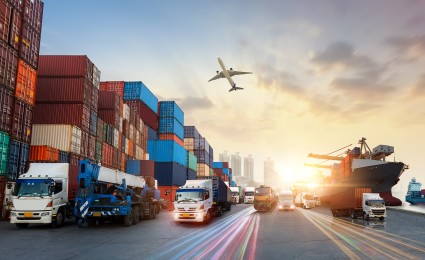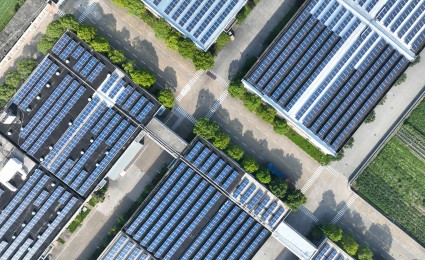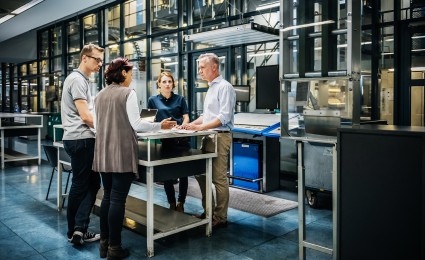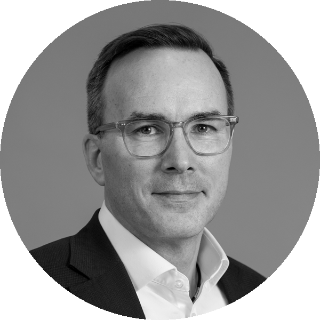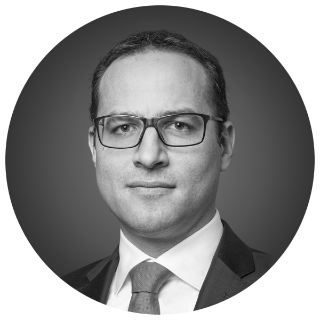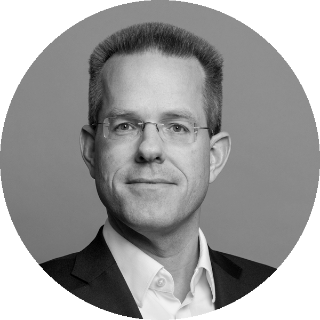

Conversation with Thomas Schäfer on affordable EVs and Volkswagen’s transformation
“With the right product substance, we will maintain our leadership in Europe while enabling affordable e-mobility for all.”
Our conversation with Thomas Schäfer, CEO of the Volkswagen brand, focuses on the path to affordable e-mobility and the strategic realignment of the brand. The focus is on new models, technological innovations, and the courage to make profound changes—with the aim of securing Europe's long-term competitiveness in the automotive sector.
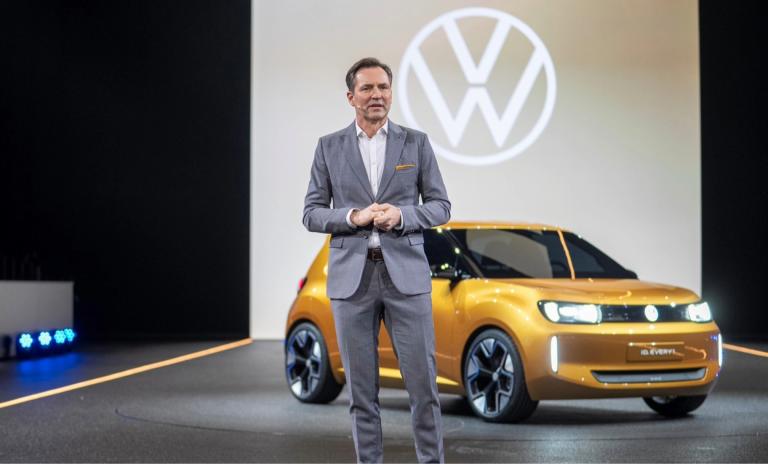
The Volkswagen Group is a leading global automobile manufacturer headquartered in Wolfsburg, Germany. Its operations span the full automotive value chain from multiple passenger car, motorcycle, and commercial vehicle brands (including Audi, Škoda, Porsche, Bentley, Lamborghini, Jetta, Seat, Ducati, and heavy commercial vehicles via Traton)—to financial services and digital mobility solutions. The Group maintains a global production footprint with 115 production facilities across 27 countries, delivering vehicles and innovations for diverse markets. As of December 31, 2024, Volkswagen employs approximately 680,000 people worldwide
Thomas Schäfer is a member of the Volkswagen Group Board of Management and CEO of the Volkswagen brand. Born in 1970, Schäfer holds a degree in engineering and began his career at Daimler AG, where he held management positions in various areas in Germany and abroad. In 2012, the top manager moved to Volkswagen AG. After positions in Germany, South Africa, and the Czech Republic, he took on the role of Chief Executive Officer of the Volkswagen brand in the summer of 2022.
Norbert Dressler: You have set the goal of making VW the world's technologically leading volume manufacturer by 2030 and you have a three-phase plan. What makes you so confident the plan will work?
Thomas Schäfer: That's right, the phases we're always talking about in our team are "catch up," "attack," and "lead." We're already in the middle of the advance phase right now: In terms of roadmaps to the future, this is the biggest one in the history of Volkswagen, and we are delivering on it with all our might. Basically, it's about three things: First, building really good cars that our customers love in terms of quality, design, technology, and price. Second, putting the company on a solid financial footing for the long term. Solid means making enough money from selling our cars to finance our future-proofing investments ourselves. And third, showing that we can build cars competitively in Germany. I am convinced this plan will work because we've already made very good progress. Our new cars are winning awards and coming out top in comparisons, we're leading the sales statistics in many places, and we've already been able to reduce factory costs by a significant amount at our German sites. We still have a lot of work to do, but we're heading in the right direction.
Norbert Dressler: The European market is stagnating. What specifically are you doing to put the VW brand back on track for growth in Europe?
Thomas Schäfer:We have big plans! We are going to launch nine new models in Europe by 2027. One of my favorite projects will see us switching gears next year, going fully into attack mode: That's when we'll be launching the production version of our fully electric ID. 2all with entry-level prices around the 25,000-euro mark. It will be a real VW that is back to looking like a real VW, and it feels like a real VW. This will be followed by a sporty GTI version and a really stylish compact SUV – we'll be giving a first real preview of them at the IAA in September. Then, in 2027, the production version of the ID. EVERY1 will be available for a price of around 20,000 euros. This puts us firmly on course for affordable electric mobility for everyone. I am certain that with the right products, we will be able to maintain our leadership in Europe and continue to grow. Next year, we will also be celebrating 50 years of GTI – a sub-brand that is incredibly important to Volkswagen and one that we will of course take with us into the future.
Norbert Dressler: In Germany, factories are being consolidated and employees fear job losses, while at the same time you are investing billions in China and software. How do you explain that to employees here?
Thomas Schäfer:Changes like the ones we are currently implementing understandably cause a level of uncertainty. We take that very seriously. At the same time, the actions we're taking are out of responsibility for the company's future. More than 20,000 colleagues have already opted in to our voluntary programs such as partial retirement or voluntary redundancy, and all of it has been done in a socially responsible manner and without any compulsory redundancies. Our investments do not signify a move away from Germany as a business location but are the foundations we need to build in order to secure our technology leadership. Only by becoming more efficient today can we create future-proof products and jobs tomorrow. Germany will remain a key center of expertise: Our new SSP software platform is being developed here. So, we are not cutting down, we are reorganizing. And it is important to us to walk this road together with our workforce and in close consultation with employee representatives.
Norbert Dressler: Many of your suppliers are experiencing persistently low margins and capacity is underutilized. If the market in Europe does not pick up in the foreseeable future, what position will Volkswagen take regarding the structurally necessary consolidation of your suppliers?
Thomas Schäfer:The automotive industry is changing fast – electric mobility, digitalization, and new production models bring major challenges for many suppliers. At the same time, those things are also creating new opportunities. At Volkswagen, we are clearly committed to Europe – as a production location and as the heart of our supplier network. Of course, we recognize that some of our partners need to make structural adjustments. That is why we are focusing on long-range planning, transparent communications, and joint solutions to make our supply chains and our network fit for the future.
Norbert Dressler: The vehicles you exhibited at the Shanghai Auto Show this year were very well received. There was a lot of talk here in Germany about them not looking like VWs anymore. Is VW reinventing itself in China and do we need to stop looking at it through European eyes? Which elements can you transfer to Europe?
Thomas Schäfer:Auto Shanghai was a huge success for us this year. We were the most visible brand across the entire show and demonstrated to the world that we have a solid plan for our biggest and most important market. The design of the show cars was developed locally by the local teams, guided by our head of design. They took our global design values of "stable," "likeable," and "exciting" and interpreted them in an individual way, adapted to regional needs. In China, we are comparatively more progressive and avant-garde because that's what our Chinese customers want from us. At the core, however, we remain consistent and true to our new global design language. This will be particularly evident in the compact SUV that we'll be exhibiting at the IAA . It's going to be one heck of a car!
Norbert Dressler: Localization is one of the buzzwords you hear a lot these days. Is the world car history now?
Thomas Schäfer:I wouldn't say the world car is history, but nowadays it's all about finding the right balance. At VW, we have the advantage of generally doing our development and production in the same place as we sell our vehicles, be that in China, the US, or South America. We are up to 95 percent localized there. Not only does this make us more resilient, it also brings us much closer to our customers and their needs. At the same time, our size as a volume manufacturer means we benefit from economies of scale, which enable us to bring premium technologies to the more affordable segments – where you wouldn't necessarily expect to find them. Chat GPT, smartphone parking, our head-up display, and the DCC chassis system are just a few examples. Our future Scalable Systems Platform, on which the new electric Golf is also based, will offer even greater possibilities.
Norbert Dressler: All eyes are on China. But how important for VW is the Asian market beyond China, for example Japan, South Korea, or India?
Thomas Schäfer:Asia is much more than just China. A few months ago, for example, we sealed the deal on an expansion into Uzbekistan – the market potential there is very promising. Going forward, we will be working with our local partner there to manufacture various SUV and sedan models from China in SKD production. Markets like Japan, South Korea, and India are also becoming increasingly important for us. We recently launched the new Golf and Atlas in South Korea and added the Golf, Tiguan and Passat to our model range in Japan. They have been very well received and demonstrate our ability to strengthen our position in the import market. India is a great example of how a market can serve local needs with locally manufactured products tailored to the local market. The Virtus is once again the best-selling vehicle in the sedan segment. So, we're taking our claim to be a global brand very seriously and are putting ourselves on a very broad footing strategically.
Norbert Dressler: Finally, what initiatives are needed from European legislators to ensure that the European automotive industry remains competitive?
Thomas Schäfer:If the transition to electric mobility is really going to succeed, we need to really work in collaboration with policymakers. What we must do is get the transition to climate neutrality linked with massive financial support for our competitiveness. The automotive industry has a key role to play here. Ultimately, policymakers need to answer the question of whether we want to have battery cell production done by European manufacturers, for example. That would require support for active production and its ramp-up, something that was introduced in the US and Canada long ago. For the transition to electric mobility, which policymakers themselves triggered with their carbon legislation, we need purchase incentives at European level. Social leasing schemes would be a good idea, so that everyone can really afford to switch to driving climate-neutral vehicles. The President of the EU Commission has initiated a strategic dialogue with Europe's automotive industry, and the Commission has presented its Automotive Action Plan. These were two important decisions that happened in the first half of the year. They make it clear that policymakers have understood the automotive industry's role as the lead industry on this. But we need prospects! And that applies to all European OEMs with production in the EU. We need to do everything we can to remain competitive in a completely changed global market. We can only do this if we do it together.
Register now to access the full IAA supplement and explore more content and interviews. Furthermore, you get regular news and updates directly in your inbox.




